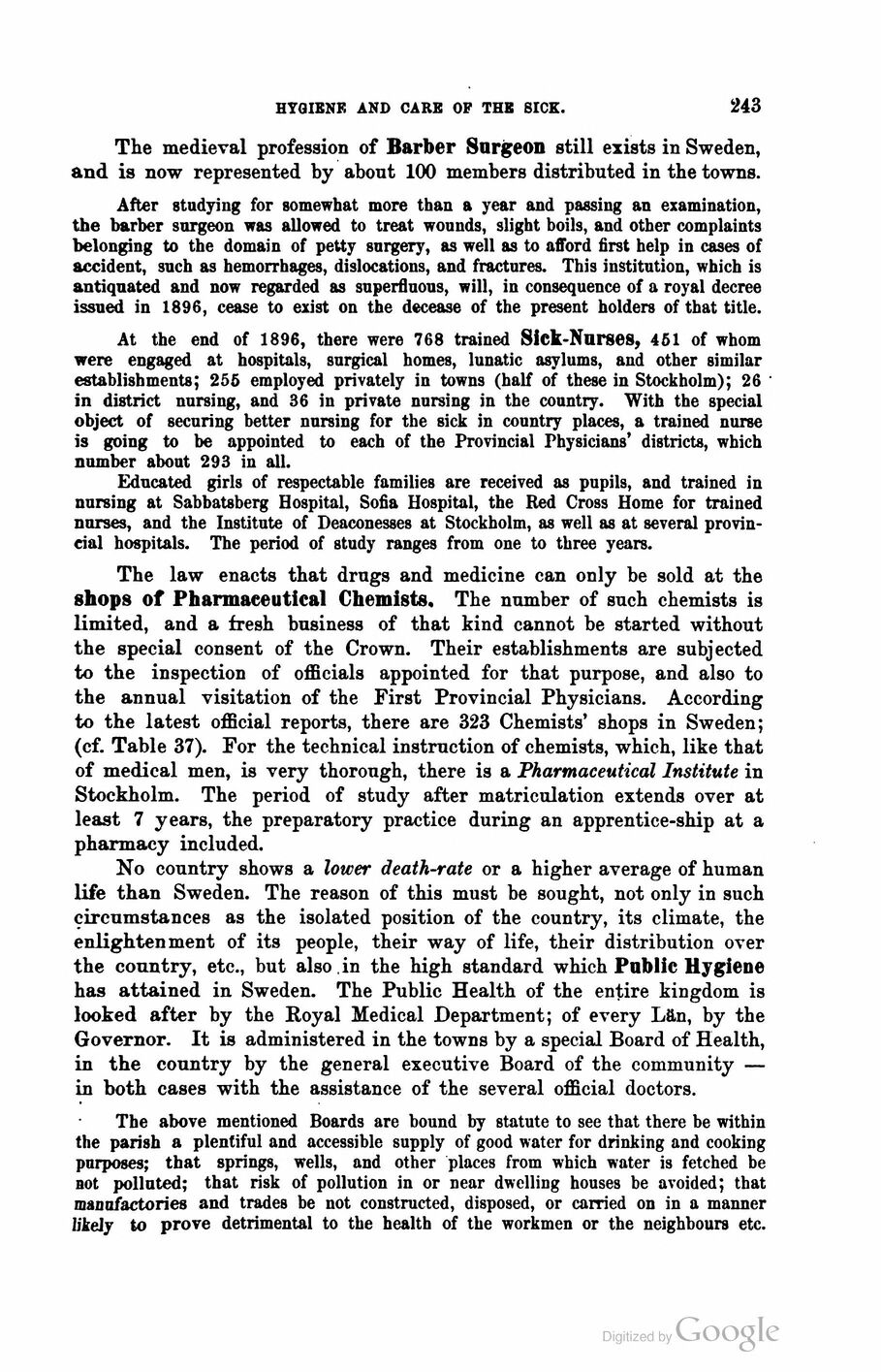
Full resolution (JPEG) - On this page / på denna sida - First part - III. Constitution and Administration - 2. State Administration - Hygiene and care of the sick, by C. Waller, M. D., Director of the Hålahult Sanatory, C. Runborg, M. D., Stockholm, and G. Schuldheis, M. D., Member of the Royal Medical Depart., Stockholm

<< prev. page << föreg. sida << >> nästa sida >> next page >>
Below is the raw OCR text
from the above scanned image.
Do you see an error? Proofread the page now!
Här nedan syns maskintolkade texten från faksimilbilden ovan.
Ser du något fel? Korrekturläs sidan nu!
This page has never been proofread. / Denna sida har aldrig korrekturlästs.
HYGIENE AND CARE OF THE SICK.
243
The medieval profession of Barber Surgeon still exists in Sweden,
and is now represented by about 100 members distributed in the towns.
After studying for somewhat more than a year and passing an examination,
the barber surgeon was allowed to treat wounds, slight boils, and other complaints
belonging to the domain of petty surgery, as well as to afford first help in cases of
accident, such as hemorrhages, dislocations, and fractures. This institution, which is
antiquated and now regarded as superfluous, will, in consequence of a royal decree
issued in 1896, cease to exist on the decease of the present holders of that title.
At the end of 1896, there were 768 trained Sick-Nurses, 451 of whom
were engaged at hospitals, surgical homes, lunatic asylums, and other similar
establishments; 255 employed privately in towns (half of these in Stockholm); 26
in district nursing, and 36 in private nursing in the country. With the special
object of securing better nursing for the sick in country places, a trained nurse
is going to be appointed to each of the Provincial Physicians’ districts, which
number about 293 in all.
Educated girls of respectable families are received as pupils, and trained in
nursing at Sabbatsberg Hospital, Sofia Hospital, the Red Cross Home for trained
nurses, and the Institute of Deaconesses at Stockholm, as well as at several
provincial hospitals. The period of study ranges from one to three years.
The law enacts that drugs and medicine can only be sold at the
shops of Pharmaceutical Chemists. The number of such chemists is
limited, and a fresh business of that kind cannot be started without
the special consent of the Crown. Their establishments are subjected
to the inspection of officials appointed for that purpose, and also to
the annual visitation of the First Provincial Physicians. According
to the latest official reports, there are 323 Chemists’ shops in Sweden;
(cf. Table 37). For the technical instruction of chemists, which, like that
of medical men, is very thorough, there is a Pharmaceutical Institute in
Stockholm. The period of study after matriculation extends over at
least 7 years, the preparatory practice during an apprentice-ship at a
pharmacy included.
No country shows a lower death-rate or a higher average of human
life than Sweden. The reason of this must be sought, not only in such
circumstances as the isolated position of the country, its climate, the
enlightenment of its people, their way of life, their distribution over
the country, etc., but also in the high standard which Public Hygiene
has attained in Sweden. The Public Health of the entire kingdom is
looked after by the Royal Medical Department; of every Län, by the
Governor. It is administered in the towns by a special Board of Health,
in the country by the general executive Board of the community —
in both cases with the assistance of the several official doctors.
The above mentioned Boards are bound by statute to see that there be within
the parish a plentiful and accessible supply of good water for drinking and cooking
purposes; that springs, wells, and other places from which water is fetched be
not polluted; that risk of pollution in or near dwelling houses be avoided; that
manufactories and trades be not constructed, disposed, or carried on in a manner
likely to prove detrimental to the health of the workmen or the neighbours etc.
<< prev. page << föreg. sida << >> nästa sida >> next page >>